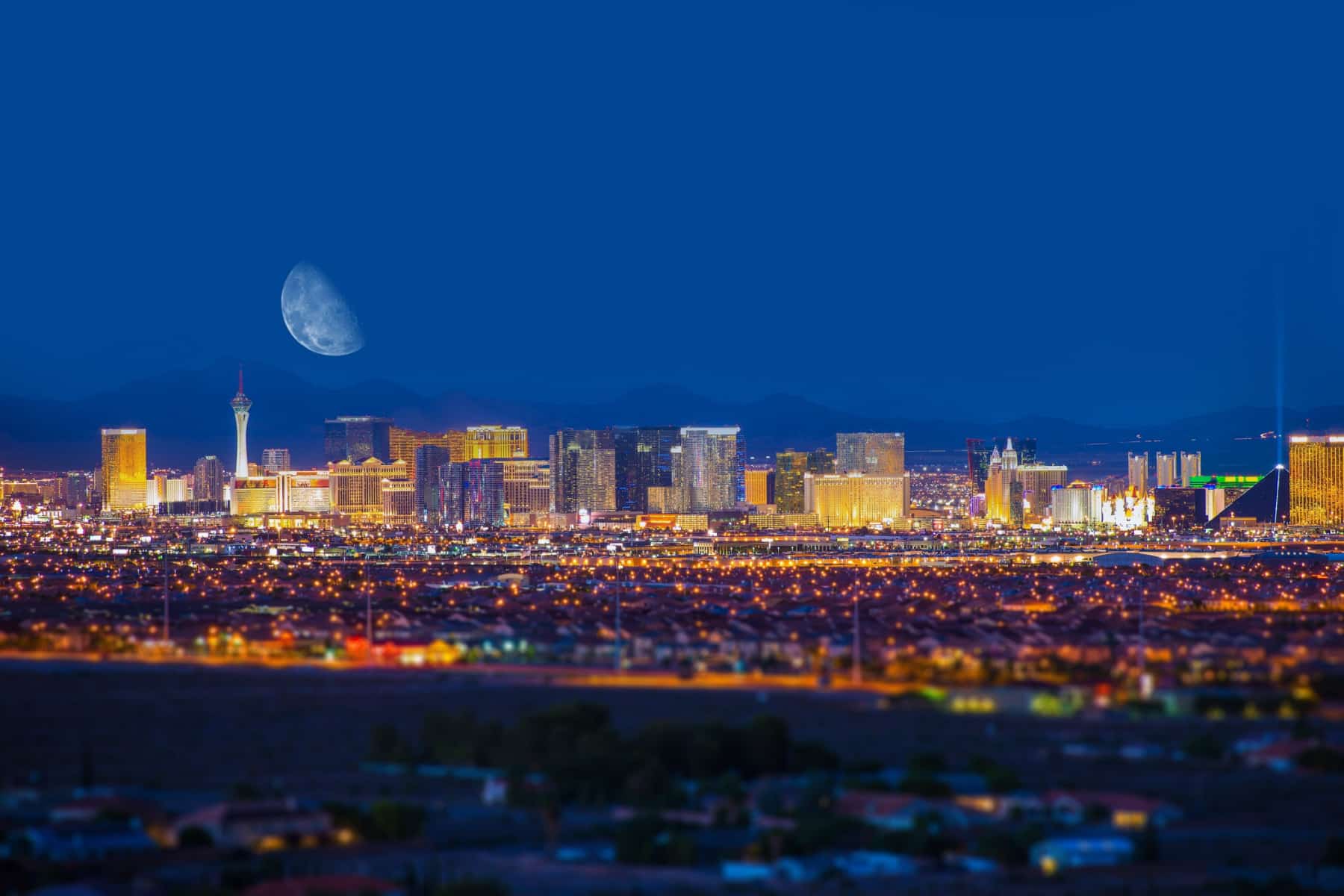
Article Summary: Las Vegas Landmarks
Las Vegas Landmarks. More Than Just Parks has 15 incredible must-see sites for you to visit.
While Las Vegas is known for its modern amenities, a treasure trove of historic landmarks awaits beneath (and behind) the neon of The Strip or Fremont Street.
The first thing to know about the Las Vegas Strip is that it’s not really in Las Vegas. Let me explain – Las Vegas is the city around the Las Vegas Strip, but technically, the most iconic section of the strip lies in a town called Paradise. When referring to the city of Las Vegas and tourist attractions, that’s generally the Downtown Las Vegas area near Fremont Street.
From the center of downtown to the outskirts of the Clark County desert, there are incredible places, iconic memorials, fascinating museums, epic monuments, and the salacious stories behind the Las Vegas Landmarks.
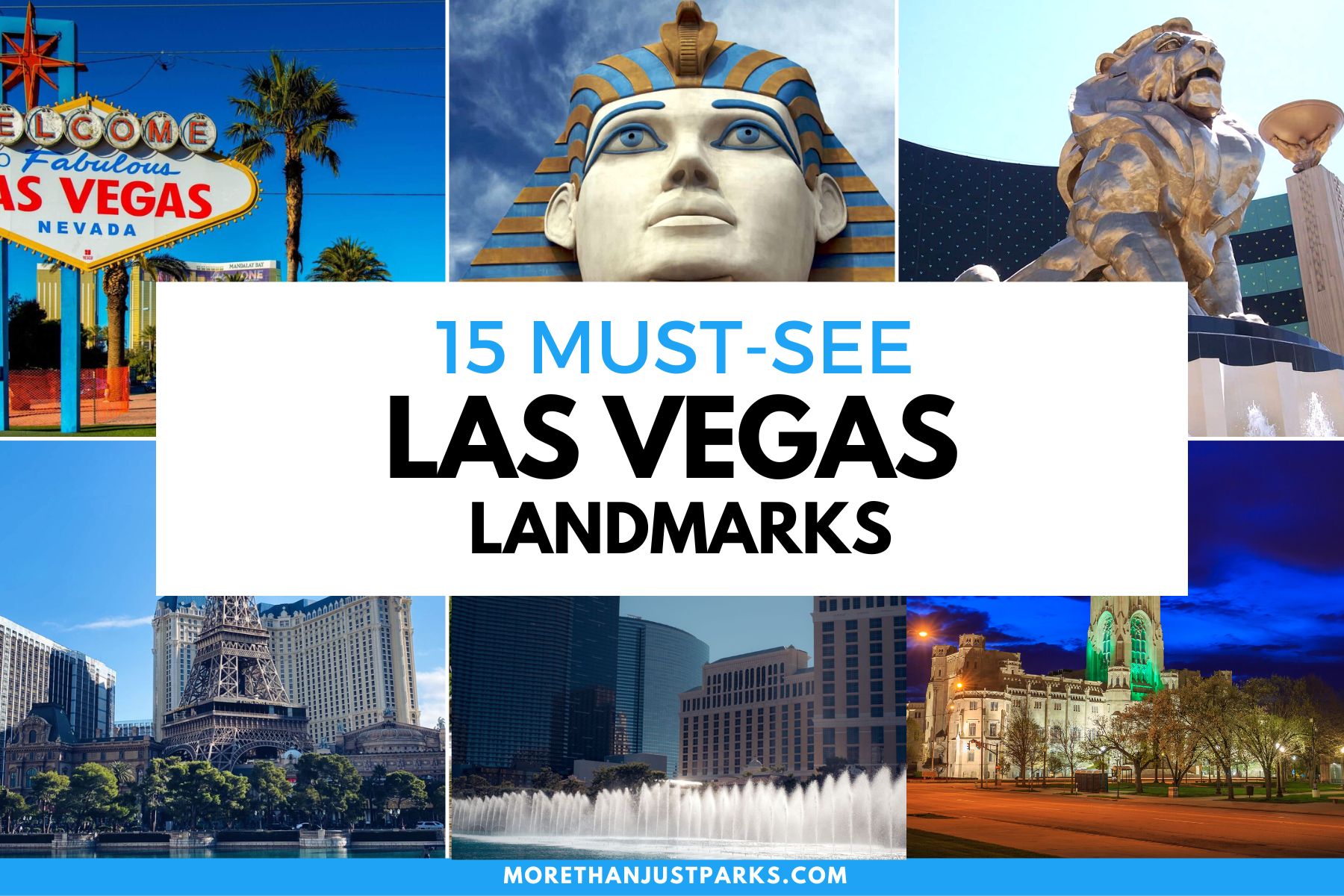
Table of Contents: Las Vegas Landmarks
Table of contents: Las Vegas Landmarks
- Las Vegas Fascinating Facts
- Top 15 Las Vegas Landmarks
- 15. Las Vegas Sphere
- 14. Old Las Vegas Mormon Fort
- 13. Luxor Sphinx
- 12. Seven Magic Mountains
- 11. The Neon Museum
- 10. Paris Hotel Eiffel Tower
- 9. Bellagio Conservatory & Botanical Garden
- 8. Springs Preserve
- 7. Red Rock Canyon National Conservation Area
- 6. Mob Museum
- 5. Bellagio Fountains
- 4. Welcome to Fabulous Las Vegas Sign
- 3. STRAT Tower
- 2. Atomic Museum
- 1. Hoover Dam
- Map Of Las Vegas Landmarks
- We Hope You’ll Follow Our Journey
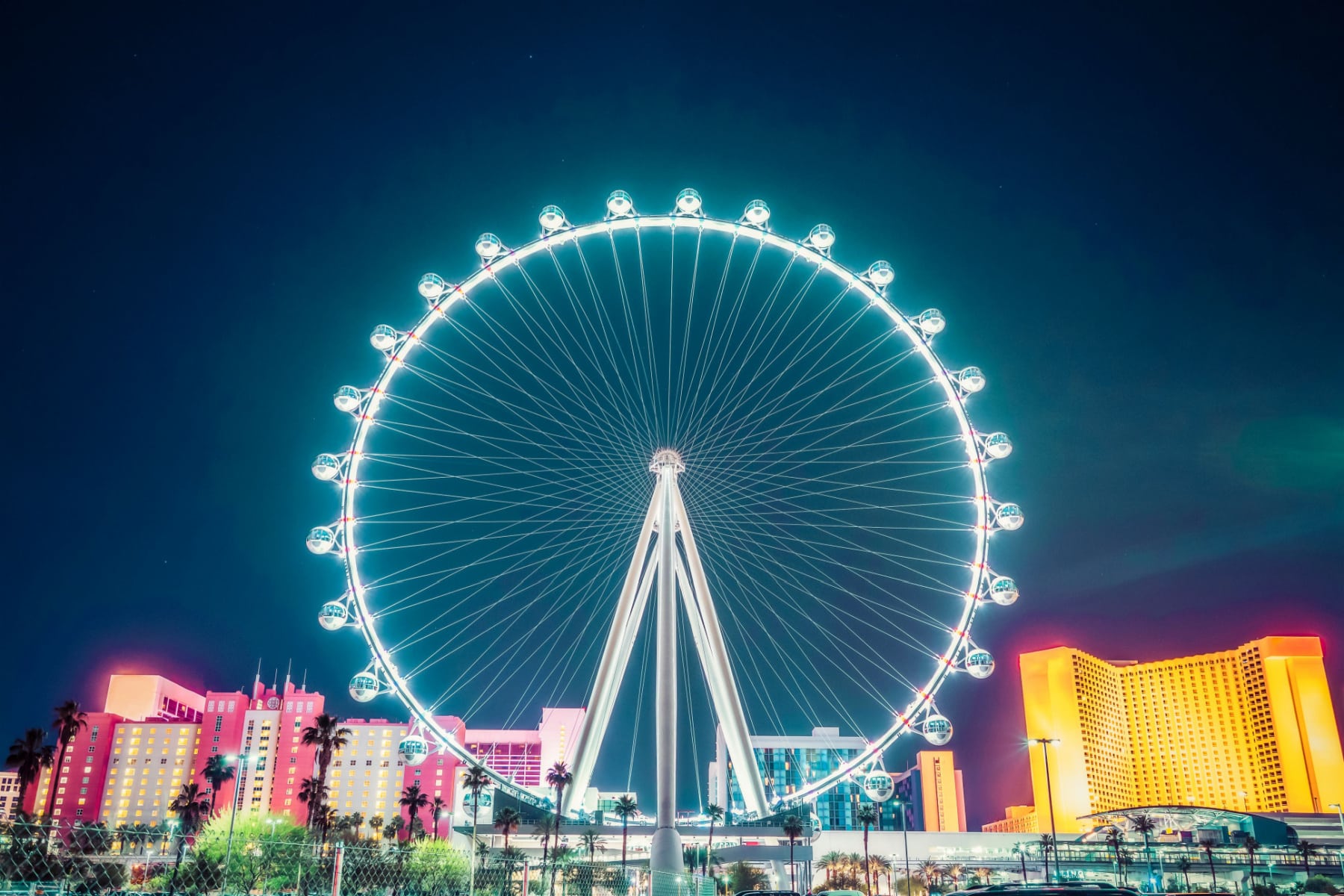
Las Vegas Fascinating Facts
- Las Vegas is the largest city in the state of Nevada, with a population of over 650,000 people. However, the Las Vegas metro area, including Henderson and unincorporated Clark County, is 2.9 million as of 2023.
- The city is known as the “Entertainment Capital of the World,” with a multitude of casinos, hotels, and entertainment venues. However, the name “Las Vegas” means “The Meadows.”
- The famous Las Vegas Strip stretches 4.2 miles on Las Vegas Boulevard and can be seen from the International Space Station.
- The city hosts an average of 300 weddings every day.
- Several natural wonders, including the Grand Canyon, Red Rock Canyon, and Valley of Fire State Park, surround Las Vegas.
- The iconic “Welcome to Fabulous Las Vegas” sign was designed by Betty Willis in 1959 and has been a popular tourist attraction ever since.
- The city is home to the world’s largest gold nugget, which weighs in at 61 pounds and is worth an estimated $3 million.
Top 15 Las Vegas Landmarks
15. Las Vegas Sphere
The Las Vegas Sphere achieved icon status before it was even turned on, but now this massive entertainment venue can’t be missed – literally.
The exterior “Exosphere” dominates the Las Vegas Strip with its globe of entertainment. Whether it’s a real-life eyeball looking around, a pumpkin at Halloween, or any other spherical wonder, you can’t help but be impressed.
- One million LED lights
- 16K resolution
- Powered by energy-efficient, sustainable technology
However, the immersive experience that awaits on the inside elevates the entire art of performance. A wraparound LED experience awaits inside, with room for 20,000 people. Here you feel the music; you don’t just listen.
Popular rock band U2 holds the first residency at The Sphere.
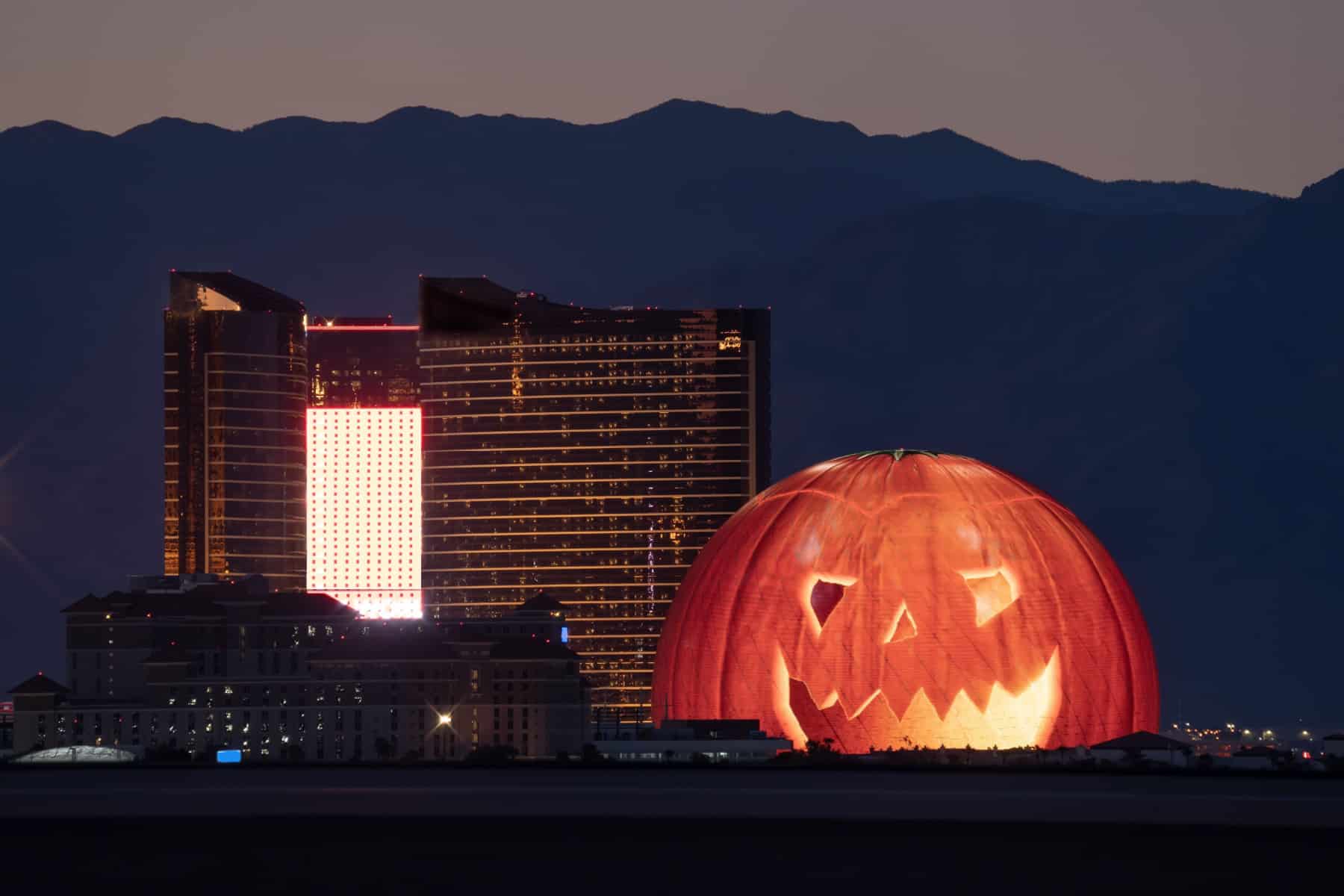
14. Old Las Vegas Mormon Fort
Do you wonder how Las Vegas sprung up in the middle of a barren and uninviting desert? It’s because of a spring-fed stream discovered here. It was named “The Meadows,” which translated to Spanish as Las Vegas.
Indigenous people lived off the land for centuries. But, in the winter of 1829-1830, a Mexican trader on the way to Los Angeles found the spring and noted it as a stopping point on what would become The Old Spanish National Historic Trail. By 1847, Mormons were settling along the trail to spread the gospel.
They built a fort, now known as the Old Las Vegas Mormon Fort, the oldest building in Las Vegas. A decade later, the Mormons moved on.
Over the years, the fort changed hands several times and was used for a variety of purposes. That includes being a military outpost during the Civil War and as a saloon and casino in the early 1900s. In the 1930s, restoration efforts started at the site designated as a state park.
The surprising part for many guests is that the fort is located right in the heart of the Las Vegas Valley, just a few blocks north of Downtown Las Vegas.
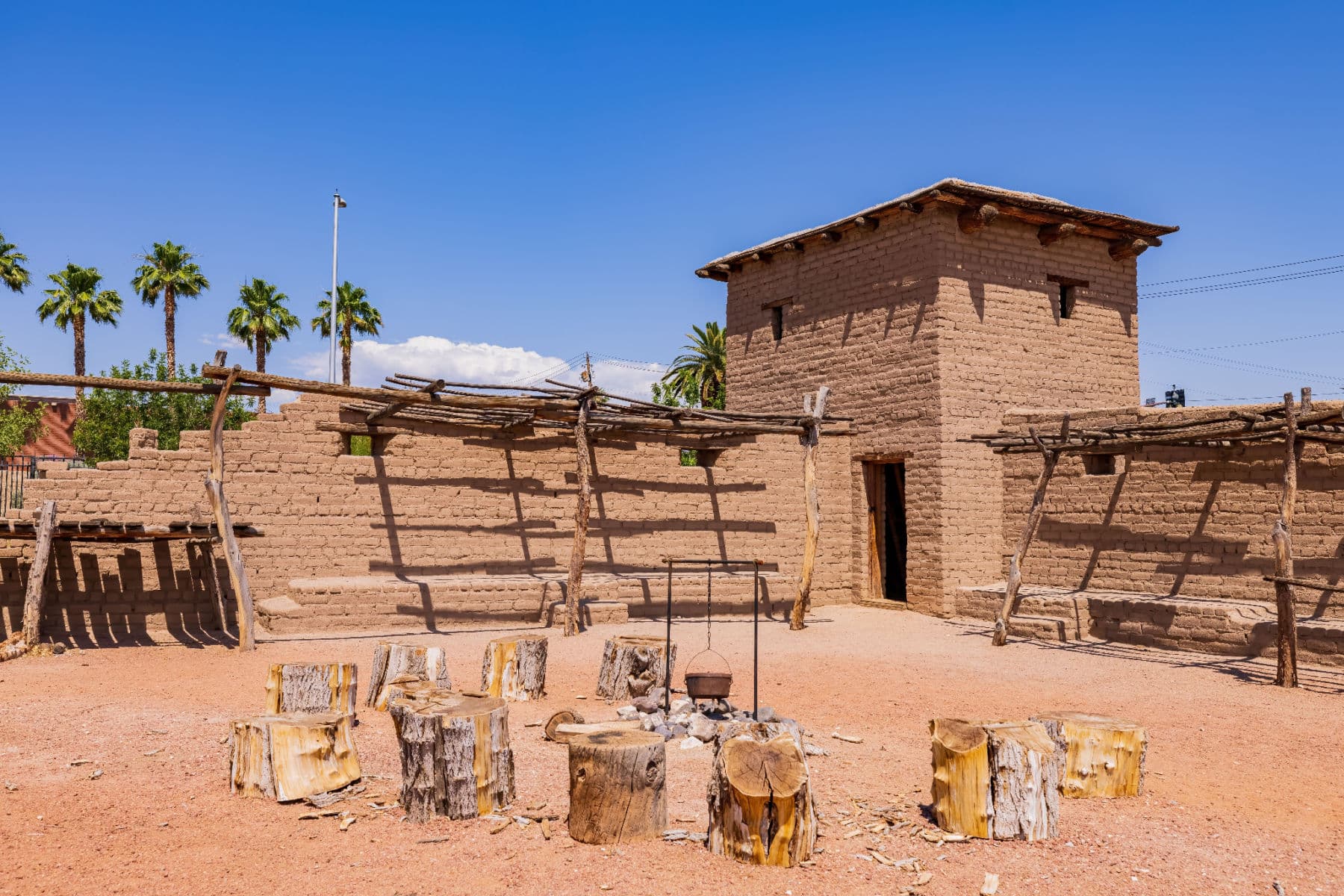
13. Luxor Sphinx
The ominous black pyramid at the northern end of The Strip houses the Luxor Casino & Hotel. The Luxor stands 350 feet tall with 33 stories inside. The proximity to the airport kept it from being any taller.
Modeled after the original Great Sphinx of Giza, which was built over 4,500 years ago in Egypt, the Luxor has been drawing attention since 1992.
The Luxor Sphinx is a replica of the Great Sphinx of Giza and is made of reinforced concrete and stucco. It stands 110 feet tall and is 240 feet long, making it one of the largest statues in Las Vegas. The statue is situated at the entrance of the Luxor Hotel and Casino.
At the top of The Luxor is a light beam ranking as the brightest light in the world. It puts off the light of 42.,000 times more intense than a lighthouse. When skies are clear, the light can be seen from nearly 300 miles away.
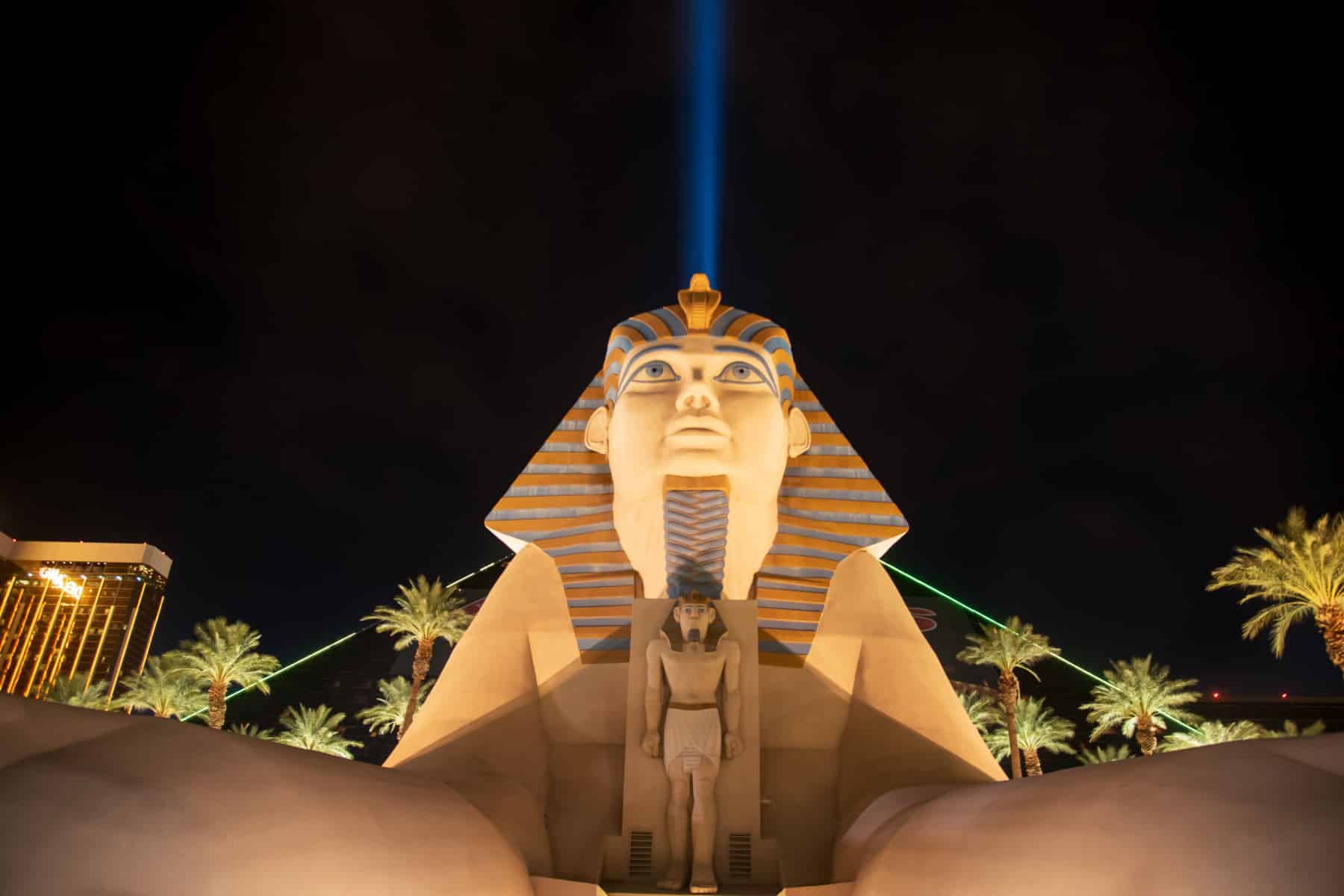
12. Seven Magic Mountains
Head south 10 miles of Las Vegas on I-15 to see the colorful Seven Magic Mountains. Swiss artist Ugo Rondinone created the design, which officially opened in May 2016.
The installation consists of seven towering stacks of brightly colored, locally sourced boulders, each weighing up to 40,000 pounds.
The boulders brighten up the rusted landscape in fluorescent hues, including pinks, oranges, yellows, and blues, rising up to 30 feet high. Here’s more about the making of Seven Magic Mountains and the artist.
Seven Magic Mountains’ inspiration comes from the contradiction between the geological time scale of the desert and the human development of Las Vegas.
While originally set to run for two years, the overwhelming popularity kept the display there. In recent years, vandals hit, and now plans are underway to restore the site. I’d recommend seeing this while you still can.
Admission is free, and the site is open to the public 24 hours a day, seven days a week.
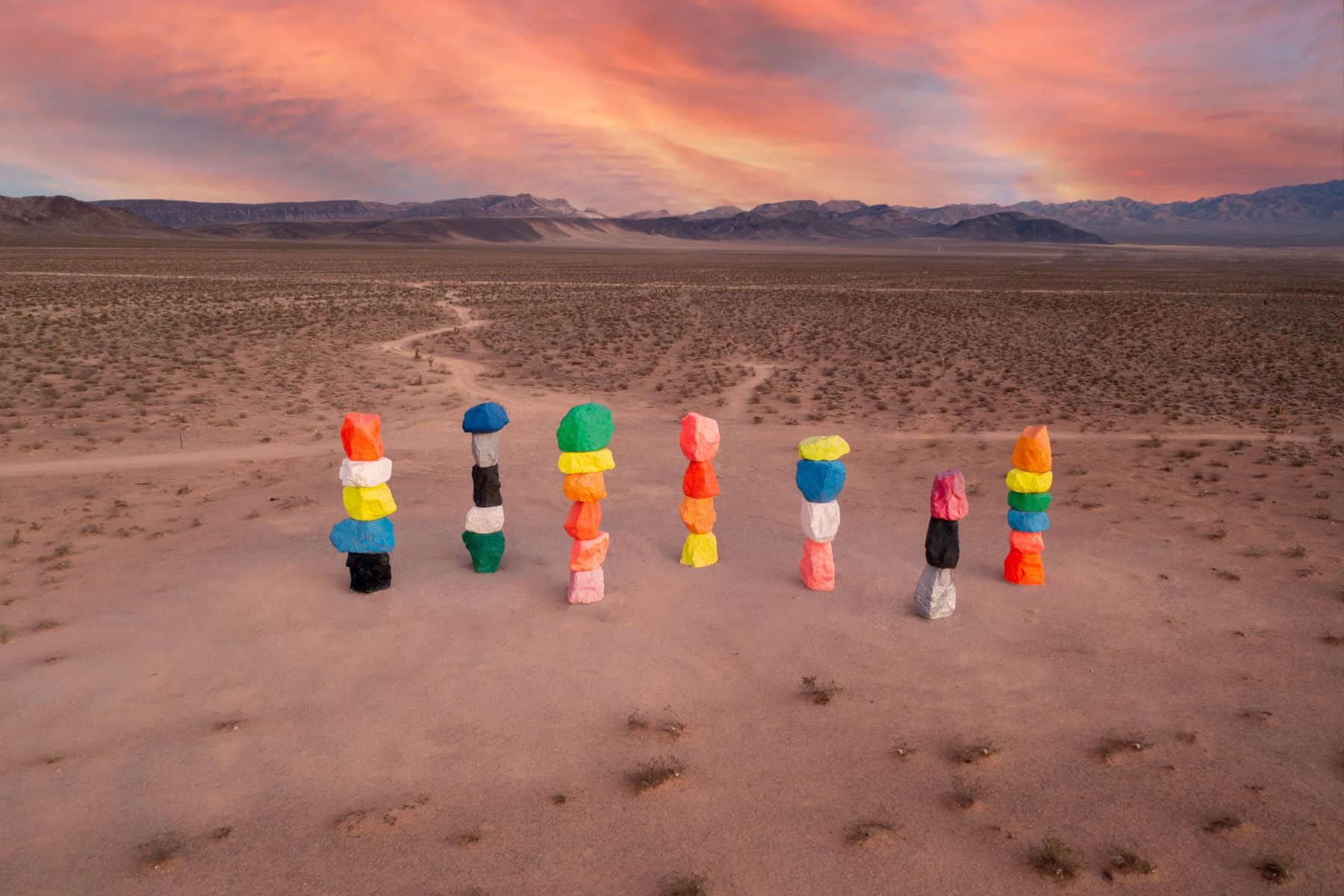
11. The Neon Museum
For years the Neon Boneyard was a secret among Las Vegas locals. It’s where all the old, outdated, and abandoned neon signs went to rest. New life was infused when the Neon Museum opened in the mid-90s. Plus, it’s less than a 10-minute walk from the Old Mormon Fort!
More than 200 vintage neon signs fill the 2.25 acres of land. The signs were salvaged from various hotels, casinos, and other businesses that were either demolished or renovated over the years.
You now enter through the former lobby of the historic La Concha hotel, shaped like a shell. The La Concha suffered where the mega-resort era started and eventually went under.
The museum’s main attraction is the Neon Boneyard, an outdoor area storing many of the restored signs. Visitors can take guided tours to learn about the history and significance of each sign, but tours do regularly sell out, so book in advance.
The museum also features several indoor galleries that showcase smaller neon signs, as well as other artifacts and memorabilia.
The Neon Museum is a nonprofit organization that relies on donations and grants to support its operations.
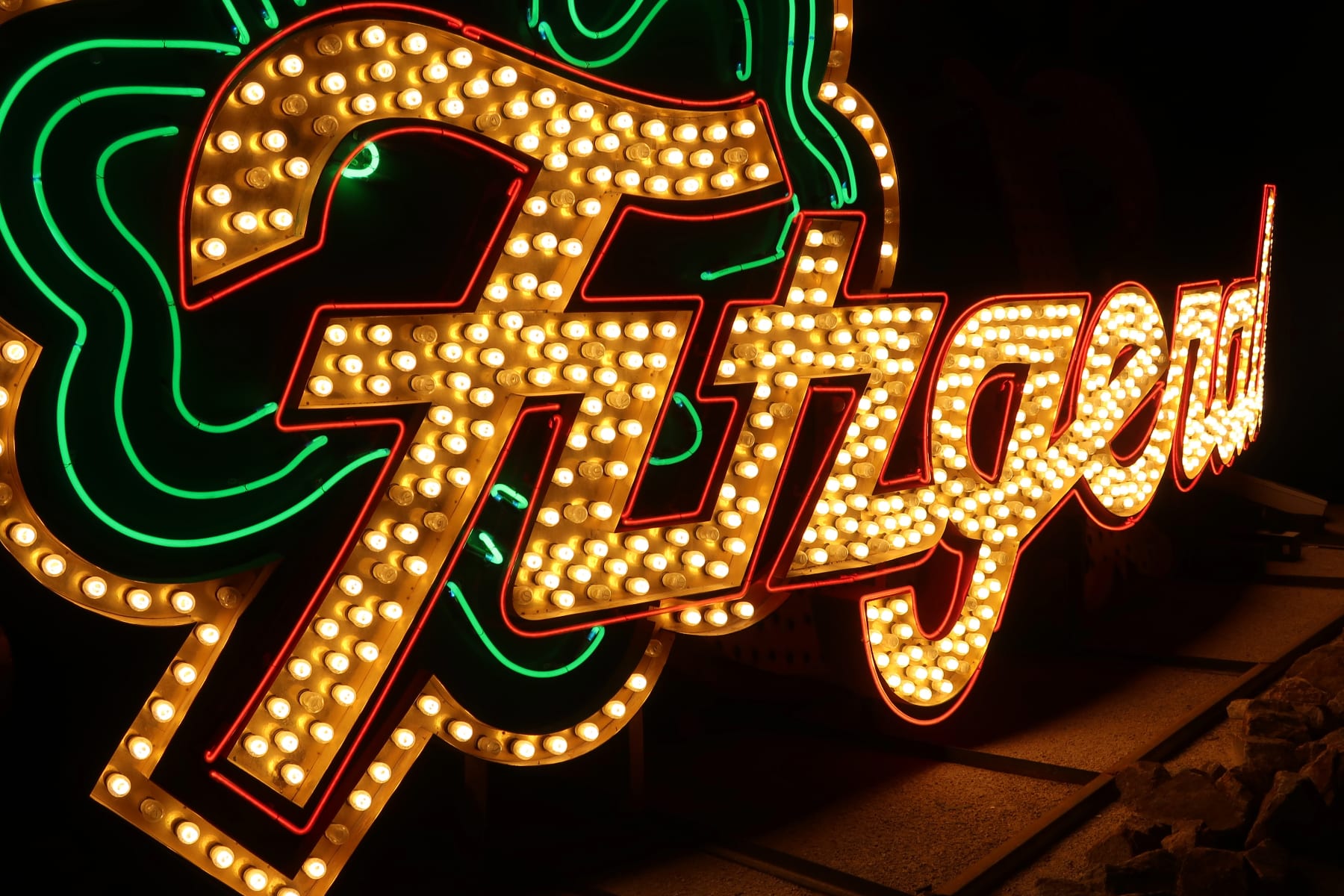
10. Paris Hotel Eiffel Tower
Have you ever wanted to visit the Eiffel Tower but don’t want to spend the money on a transatlantic flight? Our next Las Vegas landmark is an amazing reproduction of the famous tower.
At #10 on our list of the Best Las Vegas Landmarks is the Paris Hotel Eiffel Tower.
The Eiffel Tower replica at the Paris Hotel stands 46 stories tall and is approximately half the size of the original tower in Paris. It features an elevator to an observation deck 460 feet above the ground. From the observation deck, visitors can take in stunning views of the Las Vegas Strip and the surrounding area.
The Paris Hotel itself is designed to resemble the streets and architecture of Paris, complete with replicas of famous landmarks such as the Arc de Triomphe, the Louvre, and the Paris Opera House.
The hotel features more than 2,900 guest rooms, a casino, numerous restaurants, and a variety of entertainment options, including the popular “Le Cabaret” show. Fans of the show Vanderpump Rules should check out Vanderpump a Paris.
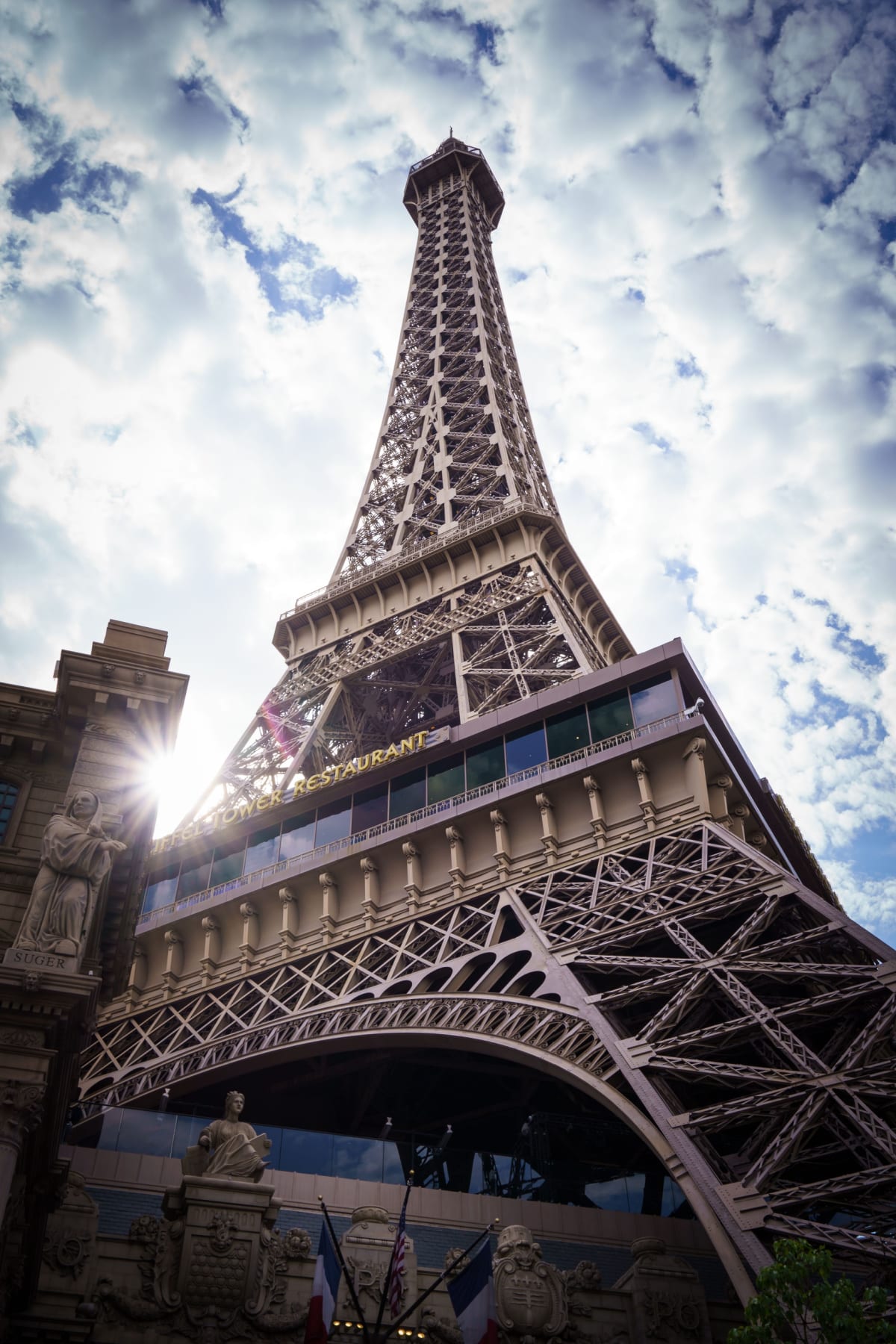
9. Bellagio Conservatory & Botanical Garden
Our next Las Vegas landmark brings nature and art inside at the Bellagio Hotel and Casino on the Las Vegas Strip.
The Bellagio Conservatory & Botanical Garden covers over 14,000 square feet and is home to thousands of plants and flowers from around the world. The displays are changed five times a year, to reflect the changing seasons and to celebrate various holidays and cultural events.
Visitors to the conservatory can expect to see an incredible array of flowers, including roses, orchids, lilies, and dahlias. There are also numerous trees, including cherry blossom, ficus, and citrus trees, as well as colorful topiaries and water features.
In addition to the botanical displays, the Bellagio Conservatory also features a variety of artistic and cultural exhibits, including sculptures, paintings, and other works of art.
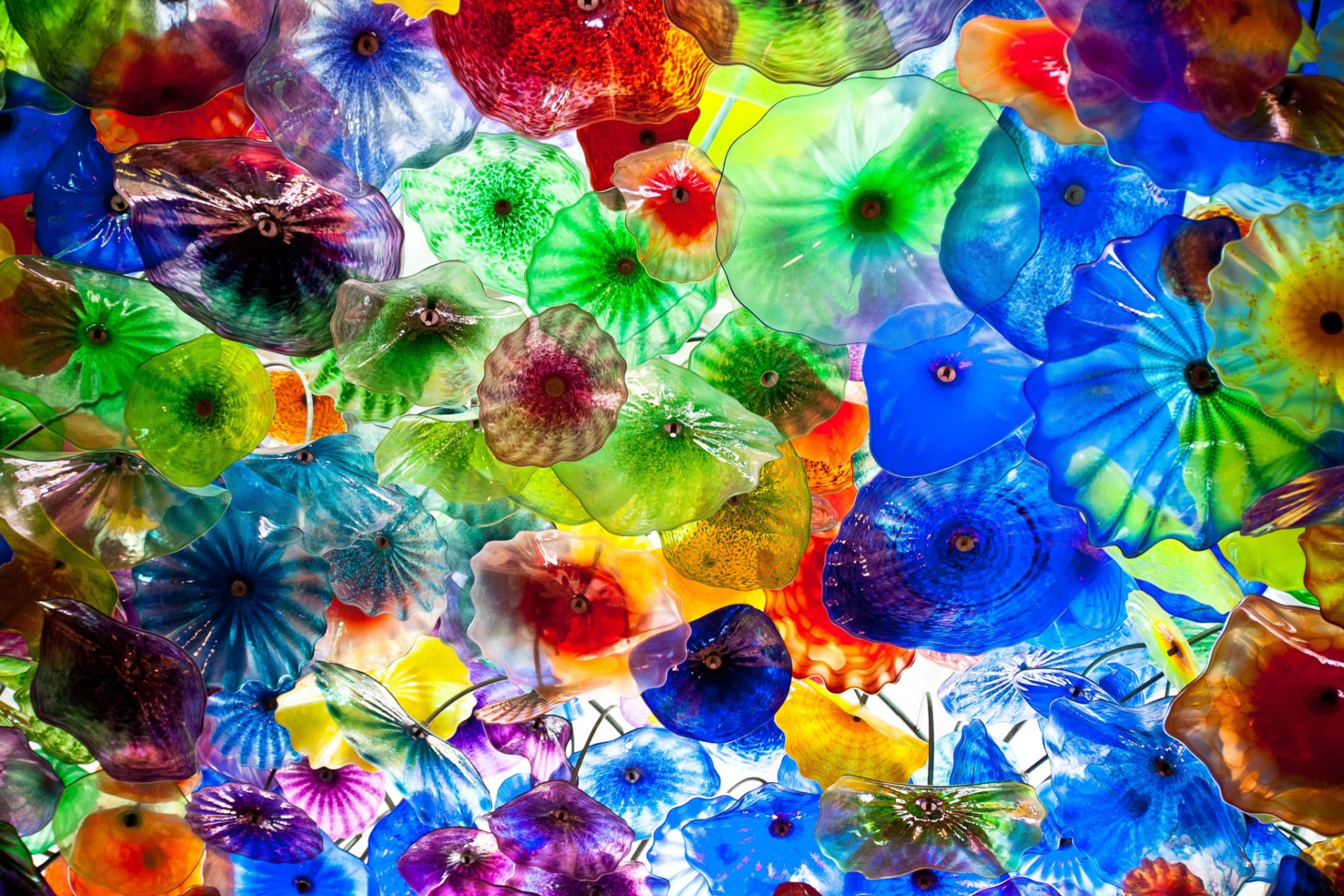
8. Springs Preserve
As noted above, Las Vegas was named for the springs that gave life to an otherwise barren landscape. The Mormon Fort was where people lived, but the Springs Preserve honors the central location of the springs.
The Birthplace of Las Vegas covers 180 acres of land with more than two miles of trails. Once inside, you’ll find two museums, a nature center, a desert garden, and interactive exhibits to learn about the landscape.
Not in the mood for hiking? Hop aboard the train to get to Boomtown 1905. The eight-minute ride offers an abundance of history lessons along the way.
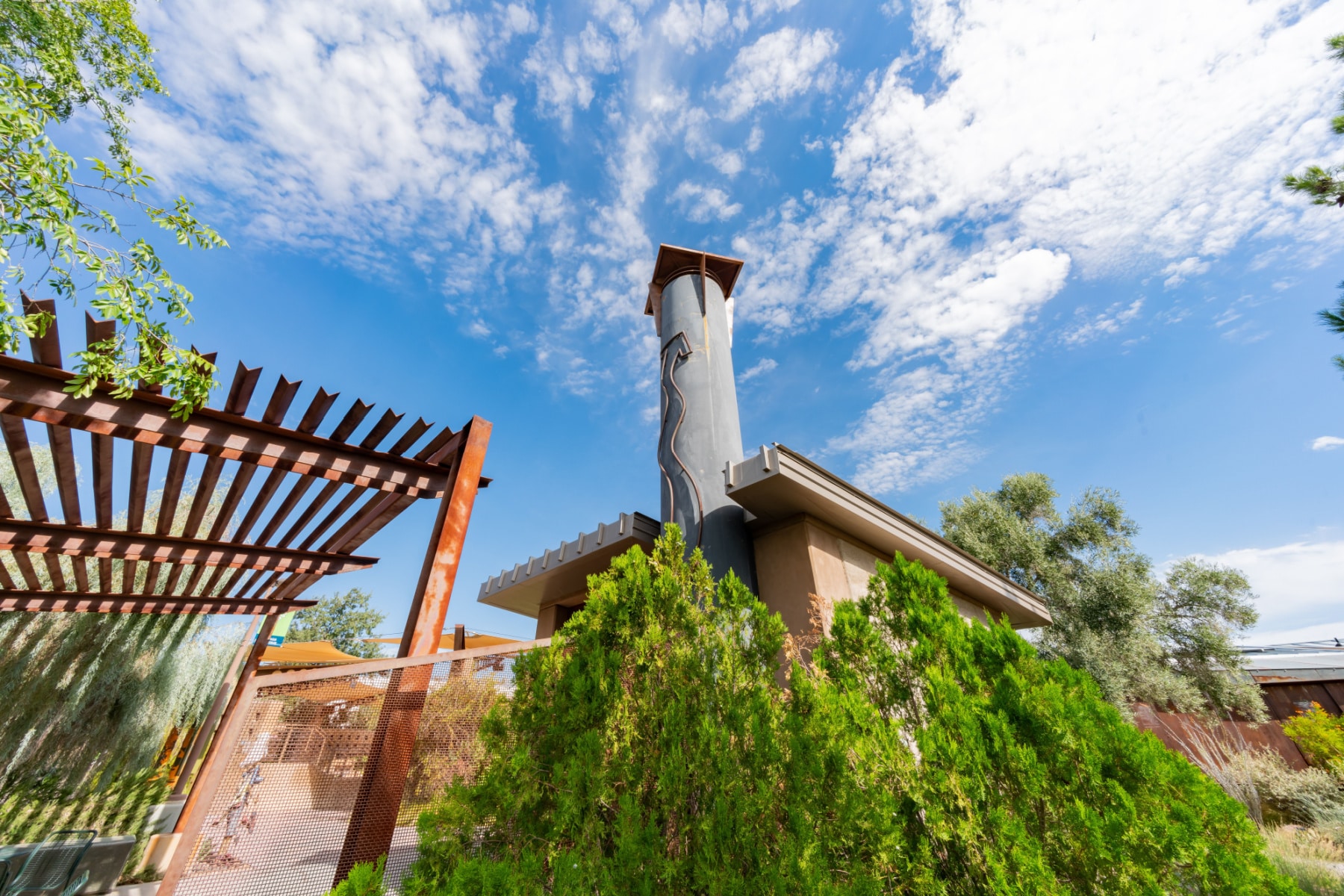
7. Red Rock Canyon National Conservation Area
In marked contrast to a town geared to entertainment and gaming, Red Rock offers enticements of a different nature. Even when stretched for time, I recommend you don’t miss the 13-mile scenic drive through the brilliant colors of the desert formations.
The Red Rock Canyon National Conservation Area is a stunning natural wonder located just 30 minutes west of Las Vegas, Nevada. The conservation area spans over 195,000 acres and features a variety of geological formations, hiking trails, and scenic viewpoints.
The most notable feature of the Red Rock Canyon area is its towering red sandstone cliffs, which are the result of millions of years of geological activity. These cliffs provide a stunning backdrop for the numerous hiking trails that wind through the area, ranging from easy strolls to challenging hikes for experienced hikers.
The conservation area is also home to a variety of desert wildlife, including bighorn sheep, desert tortoises, and numerous species of birds. Visitors can explore the area on foot, by bike, or by car.
In addition to its natural beauty, the Red Rock Canyon area also features several amenities for visitors, including a visitor center, a gift shop, and a cafe. Visit Mojave Max, the desert tortoise that is the “Punxitawny Phil” of Southern Nevada.
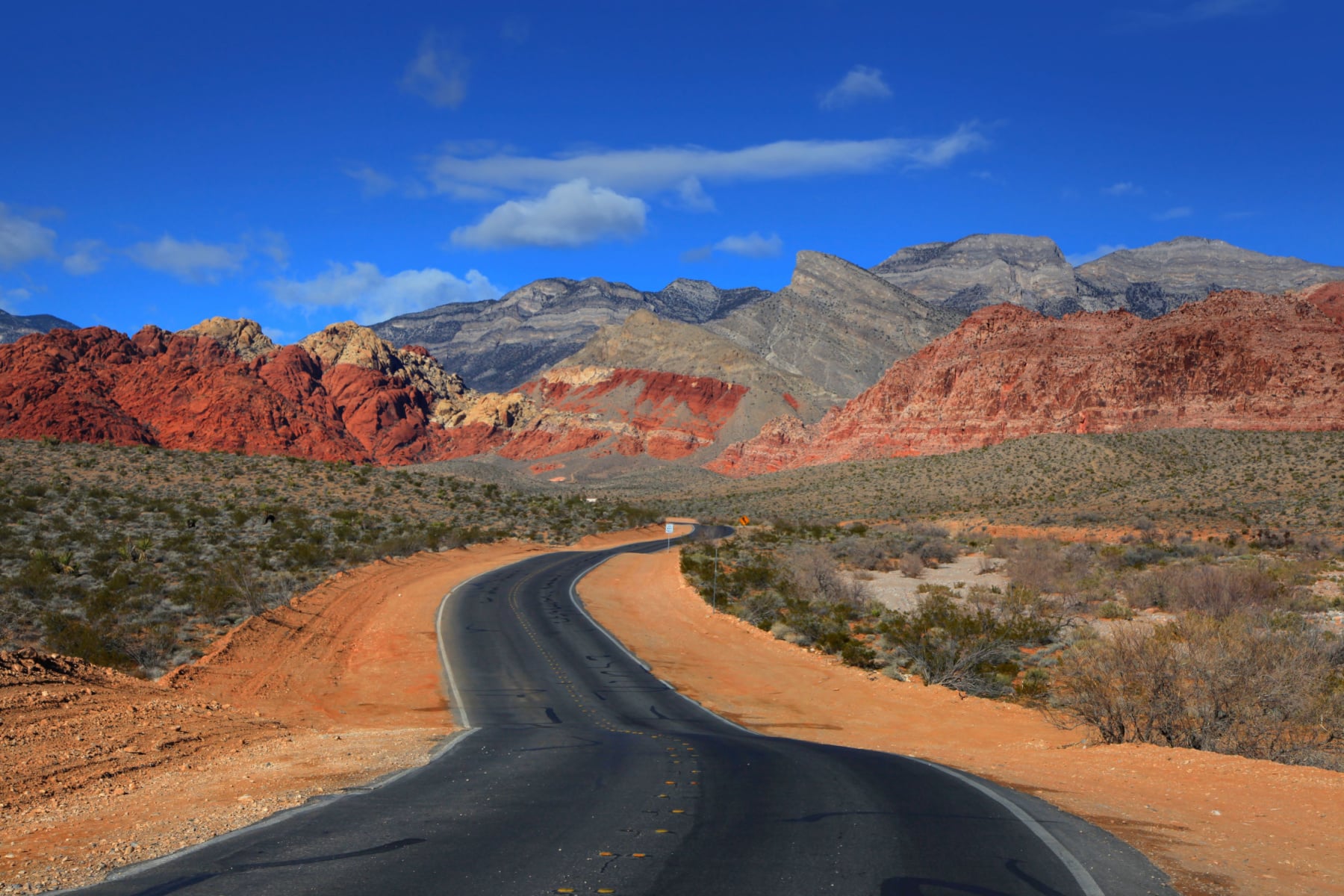
6. Mob Museum
Our next Las Vegas landmark is an immersive experience exploring the ongoing power struggle between organized crime and law enforcement from the Mob’s origination to today. At #6 on our list of the Best Las Vegas Landmarks is the “Mob Museum.”
The Mob Museum, also known as the National Museum of Organized Crime and Law Enforcement, is located in downtown Las Vegas. It showcases not only the mob’s influence on Las Vegas but also the law enforcement efforts to stop organized crime.
The museum is housed in the historic former federal courthouse and U.S. Post Office building, which was the site of one of the Kefauver Committee hearings in 1950. The Kefauver hearings were a series of nationally televised hearings that investigated organized crime connections.
Visitors can explore interactive exhibits, watch documentary films, and view artifacts such as weapons, photographs, and documents related to organized crime and law enforcement. The museum also features a number of immersive experiences, including a simulated FBI weapons training experience and an interactive crime lab.
MORE MOB HISTORY AWAITS: Remember the scene in the movie Casino where Sam Rothstein (Robert DeNiro) gets in the car, and it explodes? That happened in real life in the parking lot of Tony Roma’s in 1982. “Lefty” Rosenthal, much like Rothstein, survived the incident. The address of that location is 600 E. Sahara, which is now an adult boutique business.
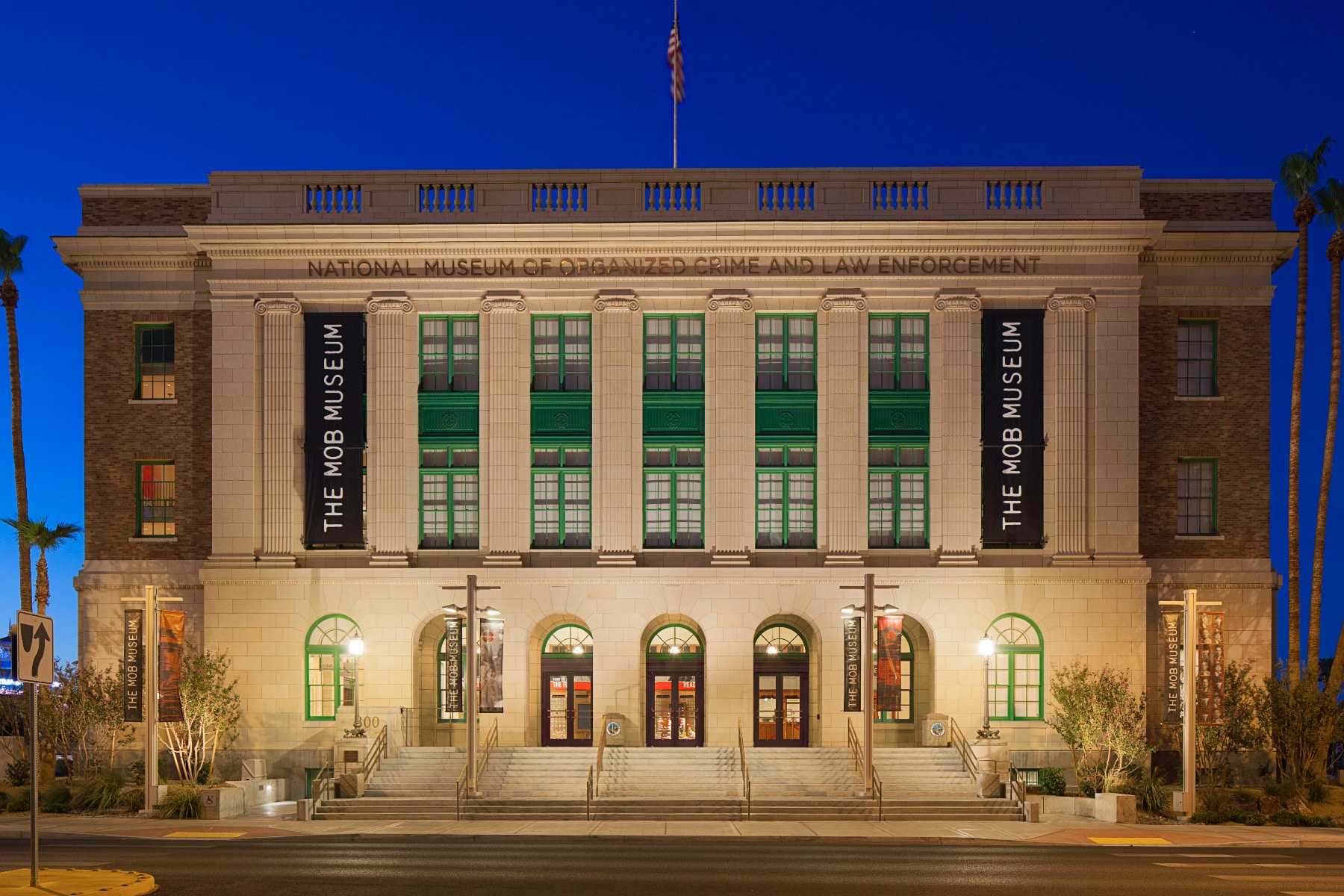
History of Organized Crime In Las Vegas
Did you know that organized crime played a significant role in the creation and development of Las Vegas as a gambling and entertainment destination in the mid-20th century?
In the 1940s and 1950s, Las Vegas was a small desert town with a few casinos and hotels. However, with the post-World War II economic boom and the increasing popularity of gambling, Las Vegas attracted more visitors and investment.
Organized crime figures saw an opportunity to profit and began investing in Las Vegas casinos. They provided the funding and muscle needed to build and operate the casinos. Some of the most famous mobsters involved in the early days of Las Vegas included Bugsy Siegel, Meyer Lansky, and Frank Costello.
Organized crime also helped to protect Las Vegas casinos from outside interference, such as law enforcement or rival gangs. This allowed the casinos to operate with a level of impunity and secrecy that would have been difficult otherwise.
Despite efforts by law enforcement to crack down on organized crime in Las Vegas, it continued to play a significant role in the city’s development throughout the 1950s and 1960s.
However, by the 1970s, many of the mobsters who had dominated the Las Vegas casino scene were forced to flee or face prosecution.
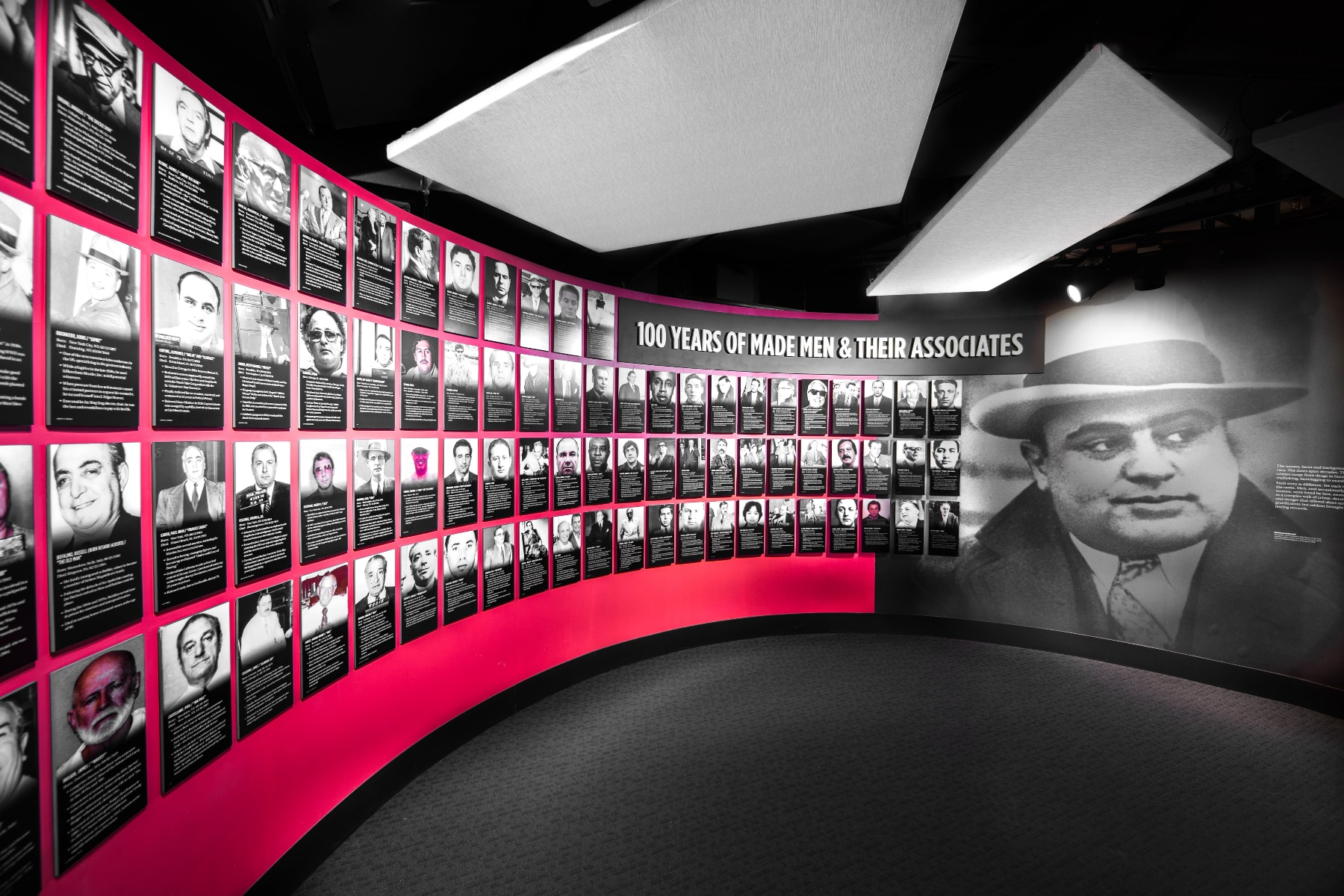
5. Bellagio Fountains
The Bellagio fountains come in as our #5 Las Vegas Landmark. At a price tag of $40 million, the fountains danced their way into Las Vegas’ legendary status in 1998. A synchronized show dazzles guests with more than 1,000 fountains, music, and light displays.
Hotel mogul Steve Wynn created the concept and tapped the team at WET Design to redefine fountains in Las Vegas. The fountains were officially opened to the public in October 1998, and their first show was set to the song “Luck Be a Lady” from the musical “Guys and Dolls.”
The fountains quickly became a sensation, drawing crowds of people to watch the water dance and move in time with the music. The shows start in regular intervals of either 15 or 30 minutes, depending on the day of the week. Several restaurants circle the fountain area, offering a dining experience like no other.
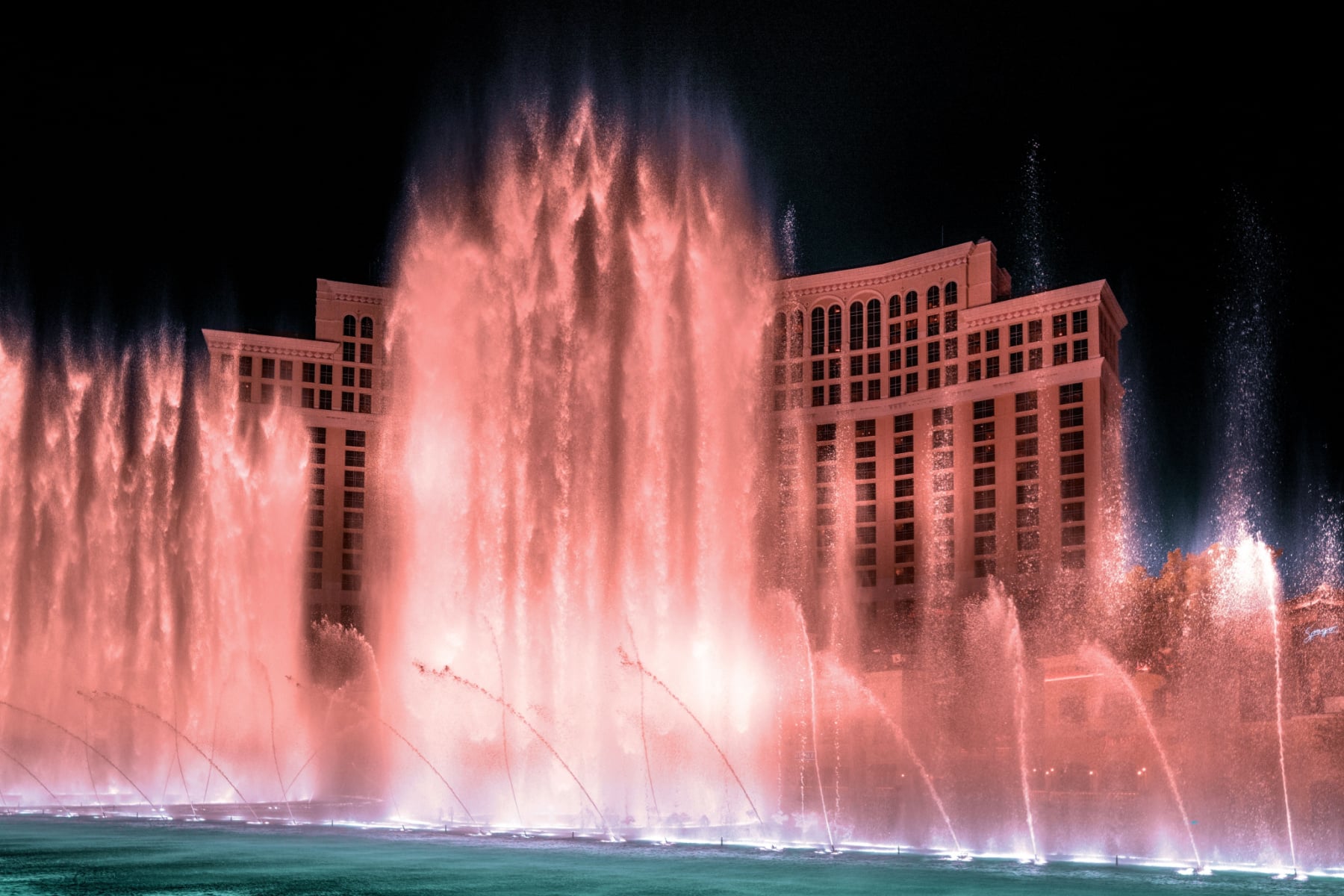
4. Welcome to Fabulous Las Vegas Sign
Our next Las Vegas landmark is an iconic sign at the south end of the Las Vegas Strip. The “Welcome to Fabulous Las Vegas” sign awaits visitors as it has since 1959. The sign stands 25 feet tall, and 89 bulbs illuminate the edge. The design has remained largely unchanged since its construction.
Betty Willis worked at Western Neon when she designed the now iconic sign. May 5 is now “Betty Willis Day” in Clark County in honor of her contribution
In 2009, the sign was added to the National Register of Historic Places, recognizing its significance as a cultural and historical landmark.
A replica sign greets visitors on Boulder Highway just past Tropicana, but you can’t stop and park like you can at the Las Vegas Boulevard location. A “Welcome to Downtown” fabulous sign once stood on Fremont Street, but was knocked down in a 2016 car accident. That’s where the downtown arches are now located.
A GIFT TO THE CITY: Betty Willis didn’t copyright the design. She opted to make her gift to the city. One of the most iconic signs in the world was sold to the county for $4,000. That’s about $42,000 in 2023.
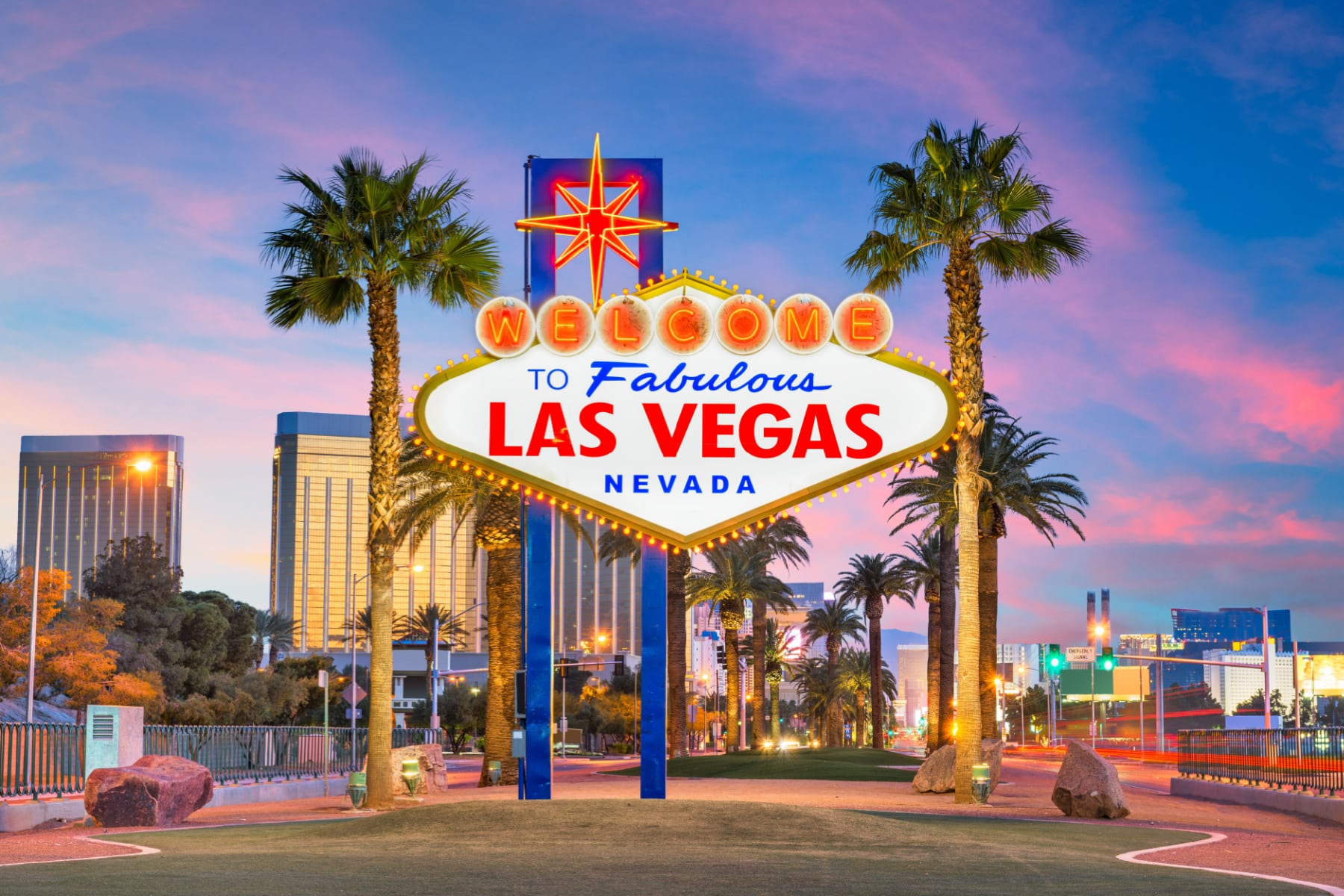
3. STRAT Tower
Our next site is the tallest freestanding observation tower in the United States atop The STRAT (formerly Stratosphere) Hotel & Casino.
The tower was completed in 1996 and was part of a $550 million project that included a casino, hotel, and amusement park. The tower itself contains a restaurant, observation deck, and several thrill rides.
The observation deck, located on the 108th floor, offers panoramic views of the Las Vegas Strip and the surrounding area. The “Top of the World” restaurant on the 106th floor rotates 360 degrees every 80 minutes.
The tower also features several thrill rides.
- Big Shot: Propels riders 160 feet into the air at speeds of up to 45 miles per hour.
- X-Scream: Tilts riders over the edge of the tower.
- Insanity: Spins riders in a circular motion while they hang over the edge of the tower.
- Sky Jump: A Guinness World Record holder, with a bungee jump from 829 feet up.
In addition to the observation deck and attractions, the Stratosphere Tower also offers a variety of amenities, including a hotel, casino, and several restaurants and bars.
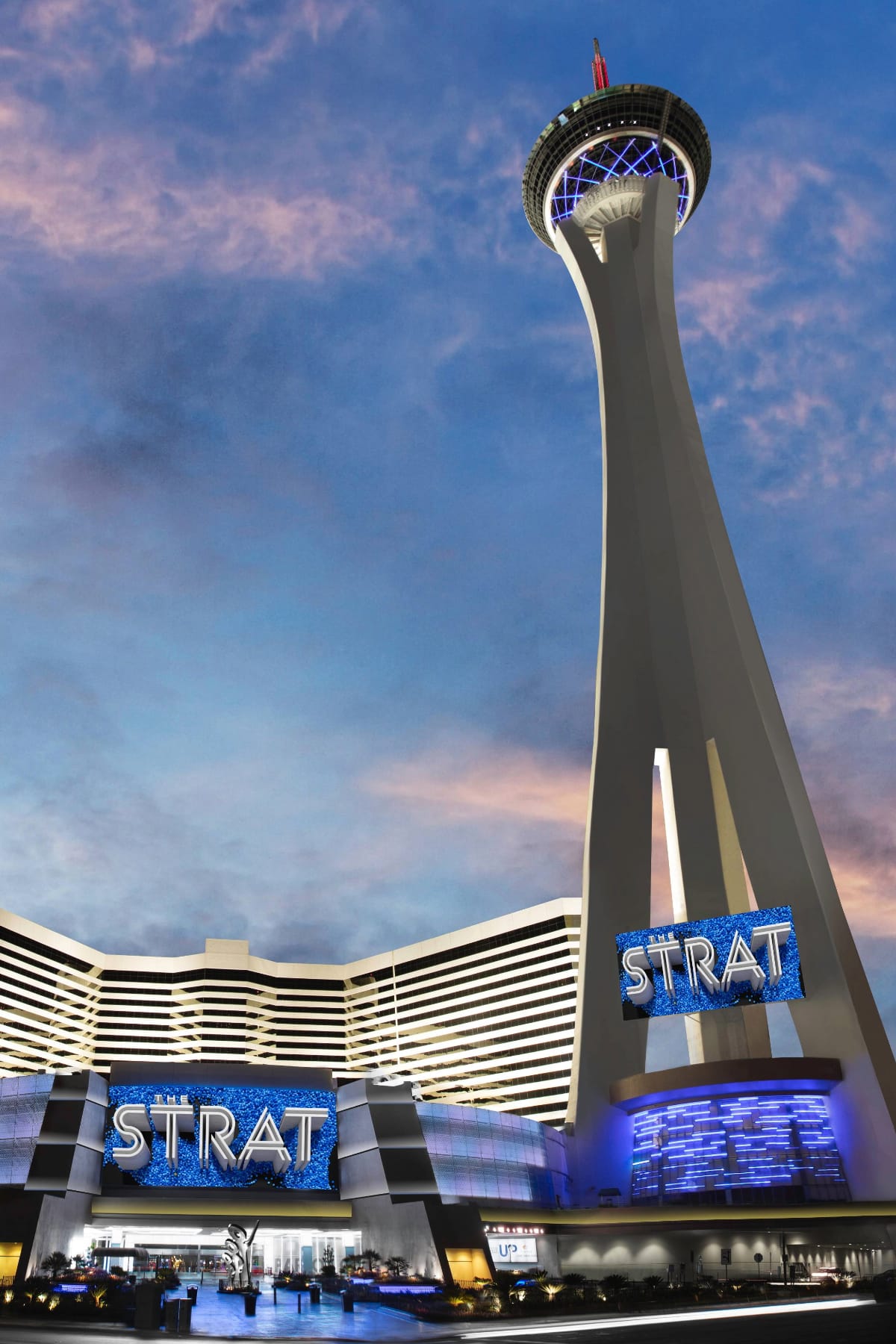
2. Atomic Museum
We think that you’re going to have a blast at our next site (pun intended). At #2 on our list of the Best Las Vegas Landmarks is the Atomic Museum.
The history of atomic testing in Nevada dates back to the early years of the Cold War when the United States began developing nuclear weapons. In 1951, the U.S. government selected a site in Nevada for its nuclear testing program, which was known as the Nevada Test Site.
The first nuclear test occurred on January 27, 1951, and was code-named Able. Over the next four decades, the U.S. government conducted over 900 nuclear tests at the site, making it one of the most heavily tested areas in the world.
The Smithsonian-affiliated museum covers the history of the Nevada Test Site, from the first nuclear tests in the 1950s to the present day. The Nevada Test Site is not open to guests, and you should avoid that remote area of the desert.
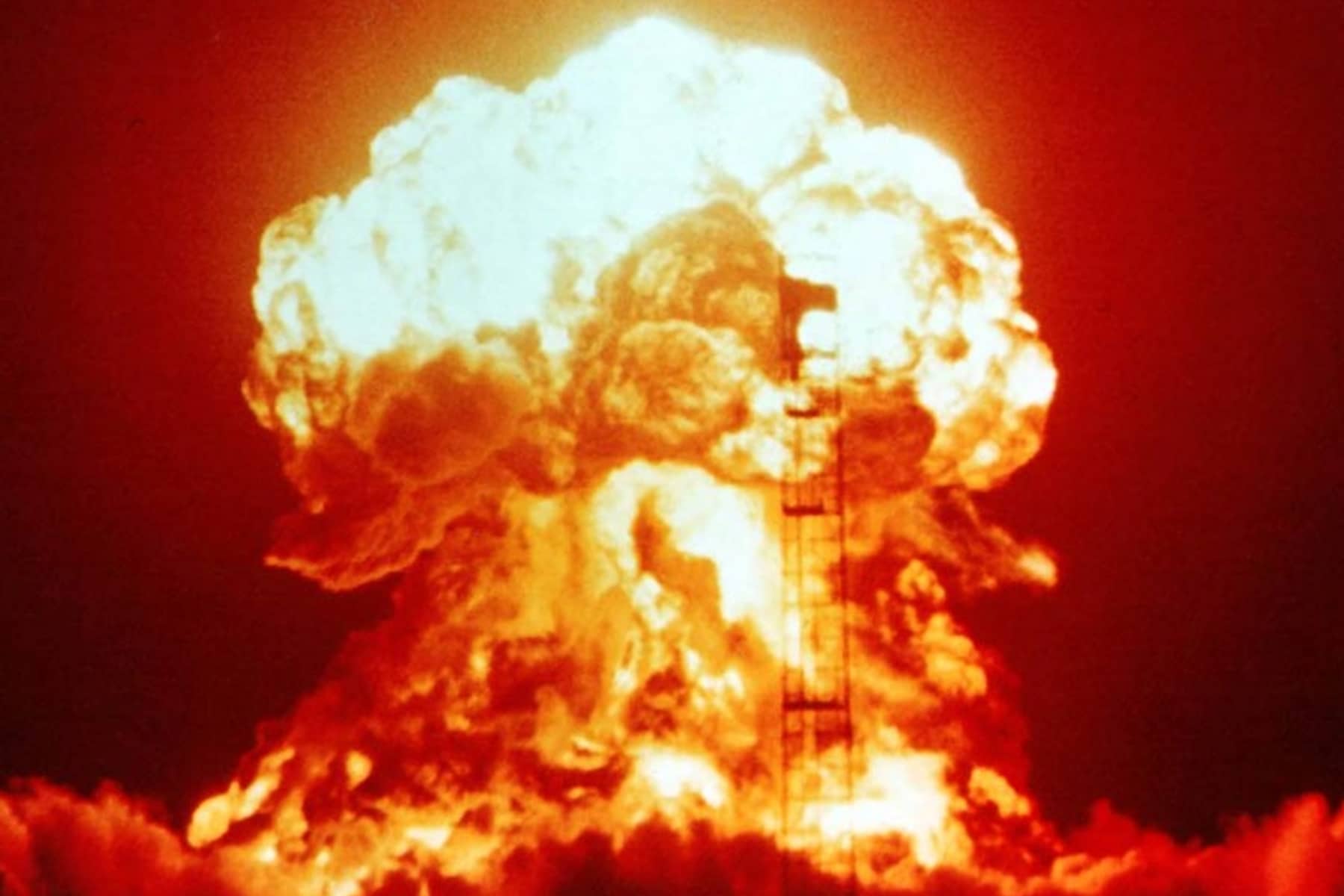
1. Hoover Dam
As the #1 Las Vegas Landmark, More Than Just Parks has selected Hoover Dam. While Hoover Dam is about 40 miles from Las Vegas, its historical connections to the city make it well worth the drive
It was constructed between 1931 and 1936 during the Great Depression. Construction was underway during President Hoover’s administration – thus, the name. However, when President Franklin D. Roosevelt dedicated it on September 30, 1935, it was the Boulder Dam. (There was no love lost between Hoover and Roosevelt.)
It would be 1947 before the name Hoover Dam was officially bestowed.
Another interesting stop on the way to Hoover Dam is Boulder City. It sprang up in 1931, built by the Bureau of Reclamation to house dam workers. Too many temptations in Las Vegas made out of the question for worker housing.
Its construction was the result of a massive effort involving thousands of workers, and cost over one hundred lives.
This National Historic Landmark stores enough water in Lake Mead to irrigate 2 million acres and serves as a popular tourist destination.
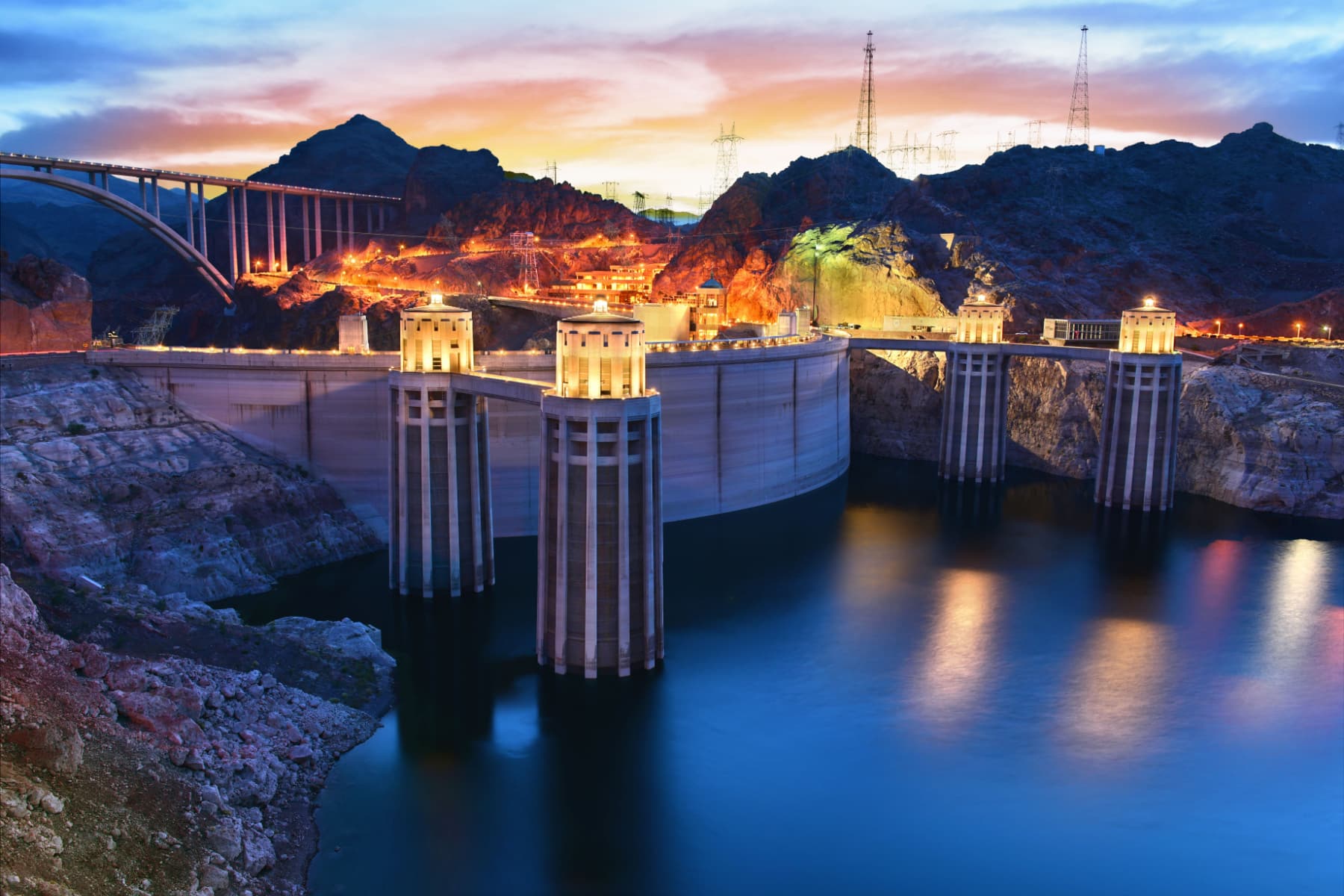
Things To Do At The Hoover Dam
Here are some things to do at Hoover Dam:
- Take a guided tour: Visitors can take a guided tour of the Hoover Dam to learn about its history, construction, and operation. There are several tour options available, including the Powerplant Tour, the Dam Tour, and the Hoover Dam Top to Bottom Tour.
- Walk across the dam: Visitors can walk across the top of the Hoover Dam and enjoy stunning views of the Colorado River and the surrounding landscape.
- Visit the visitor center and museum: The Hoover Dam visitor center features exhibits and displays related to the dam’s history, engineering, and construction. The museum also features interactive displays and artifacts related to the dam’s impact on the surrounding area.
- Take a scenic helicopter tour: Visitors can take a scenic helicopter tour over Hoover Dam and the surrounding area to get a unique perspective on this engineering marvel.
- Go on a boat tour: Visitors can take a boat tour on the Colorado River to see Hoover Dam from a different angle and learn about the river’s history and ecology.
- Enjoy outdoor recreation: Visitors can enjoy a range of outdoor activities in the surrounding area, including hiking, fishing, and boating.
- Attend events and festivals: Hoover Dam hosts various events and festivals throughout the year, including the annual Hoover Dam Marathon, which attracts runners from around the world.
- Take a scenic drive: Visitors can take a scenic drive along the Lake Mead National Recreation Area and enjoy stunning views of the surrounding landscape and lake.
Map Of Las Vegas Landmarks
List Of Las Vegas Landmarks
- Hoover Dam
- Atomic Museum
- Stratosphere Tower
- Welcome to Fabulous Las Vegas Sign
- Bellagio Fountains
- Mob Museum
- Red Rock Canyon National Conservation Area
- Smith Center for the Performing Arts
- Bellagio Conservatory & Botanical Garden
- Paris Hotel Eiffel Tower
- The Neon Museum
- Seven Magic Mountains
- Luxor Sphinx
- Old Las Vegas Mormon Fort
- Las Vegas Sphere
Pin Las Vegas Landmarks


Why Trust Us About Las Vegas Landmarks?
We’re Jim Pattiz and Will Pattiz, collectively known as the Pattiz Brothers, and we’ve spent our entire adult lives exploring and filming America’s national parks and public lands.
Our work paired us up with the National Park Service, the Department of Interior, USDA, the U.S. Forest Service, and more for years, creating films on important places and issues. Our work has been featured in leading publications all over the world, and even some people outside of our immediate family call us experts on national parks.
And, in 2018, our father – having spent a lifetime teaching history – joined us so that he could help us to tell the stories behind these amazing places.
Meet The Parks Brothers
We Hope You’ll Follow Our Journey

Our goal here at More Than Just Parks is to share the beauty of America’s national parks and public lands through stunning short films in an effort to get Americans and the world to see the true value of land conservation.
We hope you’ll follow our journey through the parks and help us to keep them the incredible places that they are. If you’re interested in joining the adventure, sign up below!
Helpful Related Articles
National Parks Near Nevada: 7 AMAZING Nevada National Parks to Visit (Photos + Helpful Guide)
Historic Sites in Nevada: 10 MUST-SEE Historic Sites In Nevada (Guide + Photos)
Great Basin National Park: 20 EPIC Things to Do in Great Basin National Park (+ Itinerary)
Best National Parks Ranked: ALL 63 US NATIONAL PARKS RANKED By Experts
Free Downloadable National Parks Map & List: LIST & MAP of National Parks By State (+ Printable Checklist)
Best National Monuments: All 128 US National Monuments Ranked (Best to Worst)
Best National Parks to Visit: 20 Best National Parks to Visit 2023
Largest National Parks: 15 Largest National Parks in the United States (+ Full List)
Most Visited National Parks: Top 10 Most Visited US National Parks
Least Visited National Parks: Top 10 Least Visited National Parks

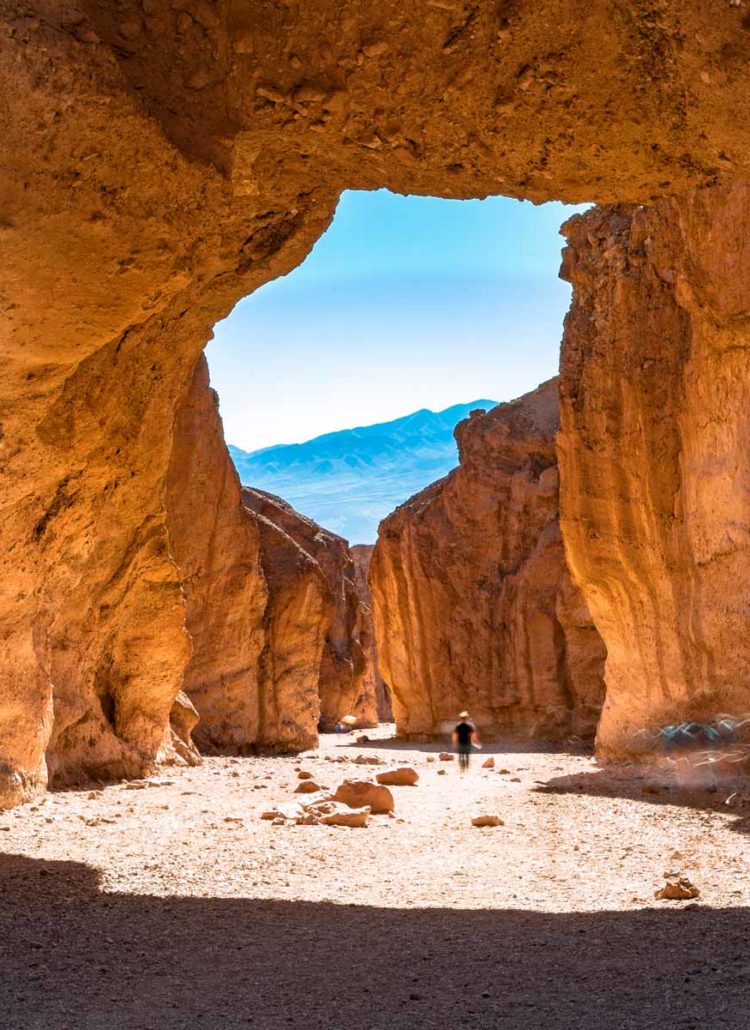
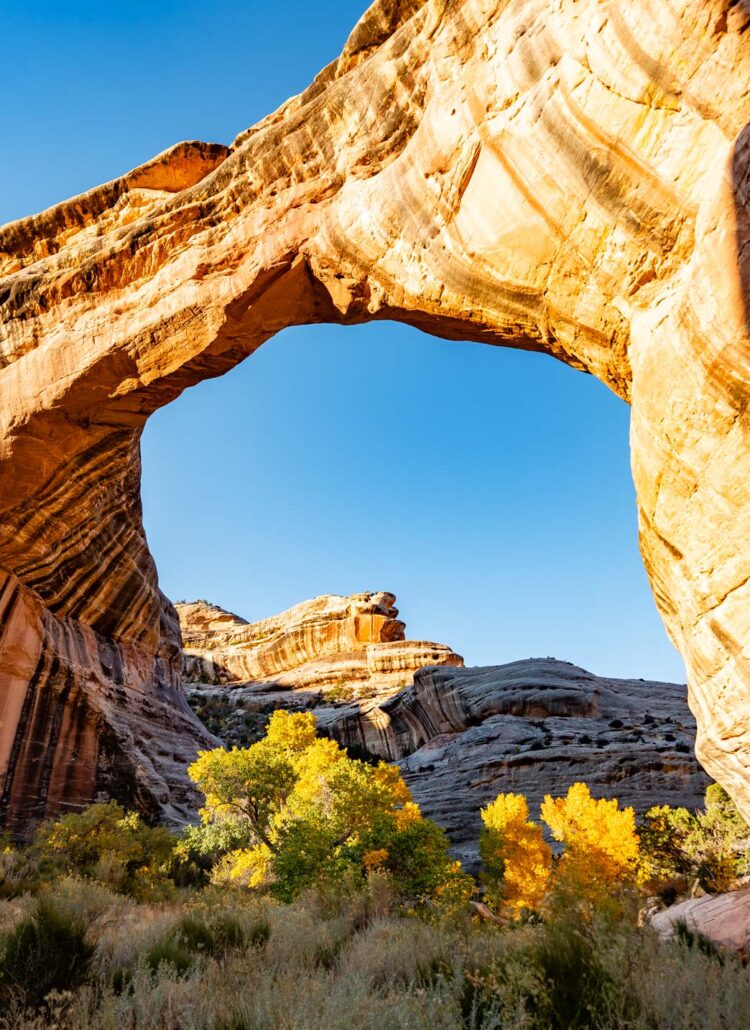
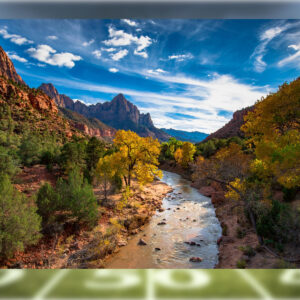

The Sphere is insanely awesome. I saw U2 there and it’s like nothing else in the world. Must see!